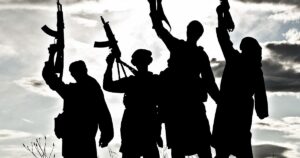
Modern society is by no means perfect and the fact that it can be a danger to itself is proof enough. Global terrorism rose 25 percent last year, with a high proportion of terrorism occurring in the Middle East, according to a report by IHS Markit. Acts of terrorism elevate this danger to alarming rates, turning from being an elephant in the room into a cat on hot bricks.The obvious reaction to this danger is creation of defensive and preventative measures.Those are numerous now, and since counter-terrorism measures are a hot topic, the number is still growing. This article will focus on one of them – video surveillance and the ways it can protect people.
First of all, terrorism is a crime and, like any criminal, a terrorist tends to be nervous. Even unreasonable minds are bound to consider the law and its ways of interfering with and intercepting their activities. While it is true that suicide bombers, for example, are not particularly concerned about the RESULTS of their actions, what they ARE concerned about is getting to a specific place without being detected. This is where our counter-terrorism measures come into play. Visible public cameras are a serious deterring factor when it comes to criminal activity. After all, the best defense is not the one that withstands attacks; it’s the one that prevents them.
Another way security cameras can serve as protection against terrorism is footage analysis. After the bomb went off it is imperative to understand exactly how it happened. This will provide invaluable information on how to avoid such disasters in the future. If it wasn’t a suicide bombing, then there are still criminals to catch, too. The footage from cameras overlooking the area is exactly what is needed. “But wait! How come you want to check the footage from cameras that are probably destroyed by the explosion?” Thankfully, modern cameras don’t have to store all of their footage on SD cards or any other detachable devices. IP cameras now transmit all of their data to servers (even microcomputers will do for that) or even to clouds.

Moreover, the software designed for security cameras now has intellectual modules, capable of e.g. face recognition. The best defense has to be adaptable.
Finally, cameras can help spot the danger before it actually manifests itself. As has already been mentioned, terrorists aren’t emotionless machines – they are understandably nervous. Knowing this, the counter-terrorism measures can be adapted too. Scanning the crowds for suspicious looking individuals is a basic strategy, of course, and many would argue that it’s nearly useless. However, if you know what you are looking for, it’s a whole different matter. The right camera with the right angle can bring a lot even to a single screen watched by observant people. Yet another way of preventing terrorism. Video surveillance is an important tool in the society’s protection against terrorism, and like any tool, it requires skill and knowledge to use it properly.
IP Camera Systems Tell the Truth

On September 11, 2012 militants, armed with grenades and anti-aircraft weapons, stormed the diplomatic mission in Benghazi, killing the US ambassador to Libya and three others. The man suspected of orchestrating the attack was finally captured and appeared in federal court in Washington DC court to face formal charges of conspiring to provide material support and resources to terrorists, resulting in a death. It’s not going to be an easy trial, but fortunately the country had the benefit of IP camera systems fighting the good fight.
According to the New York Times, In addition to eyewitness accounts, the prosecutor was expected to rely on video from IP camera systems. Thanks to Video Management Software, Justice Department investigators were able to analyze over one hundred hours of video that allowed them to construct a narrative of the period leading up to the attacks, the actual attack, not only on the mission, but on the CIA annex as well, and the time following the siege.
Adapted from SecurityMagazine, Kintronics, and Felenasoft



































































